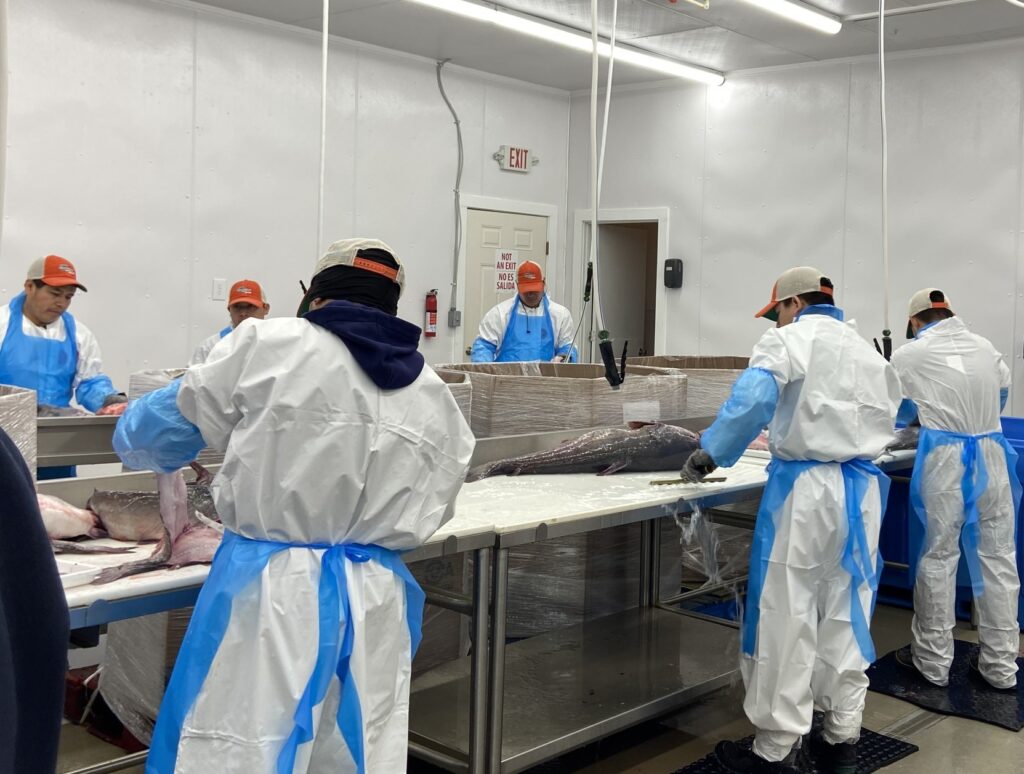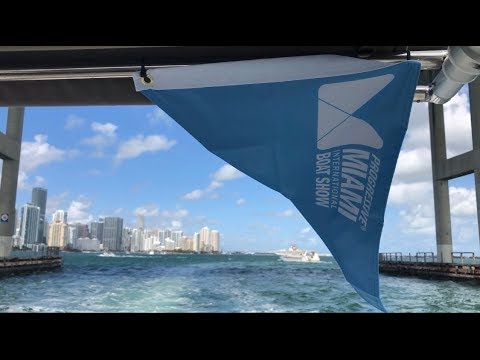Wild-caught Chesapeake blue catfish isn’t something we see on many menus in the Bay region…yet.
The Bay seafood industry, Maryland and Virginia are working hard to change that by clearing the way for more blue catfish processing. On Friday, Maryland Senator Ben Cardin and Senator Chris Van Hollen traveled to Tilghman Island to announce $4.5 million in federal funding focused on the blue cat fishery.
Why is it important for this fish to start appearing in more restaurants and grocery stores? The blue catfish is invasive, widespread in the Chesapeake Bay watershed, and an apex predator. Studies show it eats some of the most important Bay species: crabs, perch and menhaden.
“One of the hardest things about managing invasive species is that they have no natural predators,” said Maryland Department of Natural Resources Secretary Josh Kurtz at Friday’s announcement. “Well, take a look around, it’s us…”
The Maryland natural resources and agriculture departments have been encouraging Bay locals and visitors alike to eat more blue catfish. If there is steady demand for blue cat from diners, commercial watermen can make a steady living getting more and more of these fish out of the Bay.
The funding announcement was made during a tour of Tilghman Island Seafood, the only USDA-certified blue catfish processor on Maryland’s Eastern Shore. Seafood plant owner Nick Hargrove and his team process about 20,000 pounds of blue catfish every day.
“This business is not only supporting watermens’ livelihoods, it is also proof that we can build an economy around a challenge that we all need to work together to address for the Bay we love,” Hargrove said.
The funds will be used to expand blue catfish processing, efforts to spur consumer demand for blue cat, and support scientists who are studying the species.
$3 million goes toward greater processing capacity at businesses like Tilghman Island Seafood. The program language encourages the U.S. Department of Agriculture (USDA) to prioritize proposals that support the processing of invasive wild-caught catfish.
Until now, selling blue catfish has posed a challenge for the seafood industry because catfish have been under regulatory control of USDA rather than under the Food and Drug Administration like all other fish. USDA personnel must be present at least once per shift at catfish processors, making logistics difficult when fishermen bring in their catch. The new funding includes $1 million to cover inspectors’ overtime pay when a catch comes in outside of daytime working hours.
$500,000 in funding will go to support research and population monitoring to get a better picture of blue cats’ full impact. This could include tracking where catfish are in the Bay, their seasonal movement, and where they spawn; further study their diet patterns; develop early warning systems to help remove them quickly from new tributaries; and test removal methods.
Receiving goverment support for the blue catfish problem has taken some time. Last year, Maryland Governor West Moore filed a petition with NOAA Fisheries asking for federal fishery disaster aid due to the blue catfish explosion, but that federal aid was denied this January.
Virginia recently announced its own state funding of $250,000 for one blue catfish processor, Sea Farms, Inc., on the Middle Peninsula. A bill in the 2023 Virginia General Assembly to invest $2 million in a catfish industries development program was voted down, and instead the program was slashed to $250,000 in state money.




